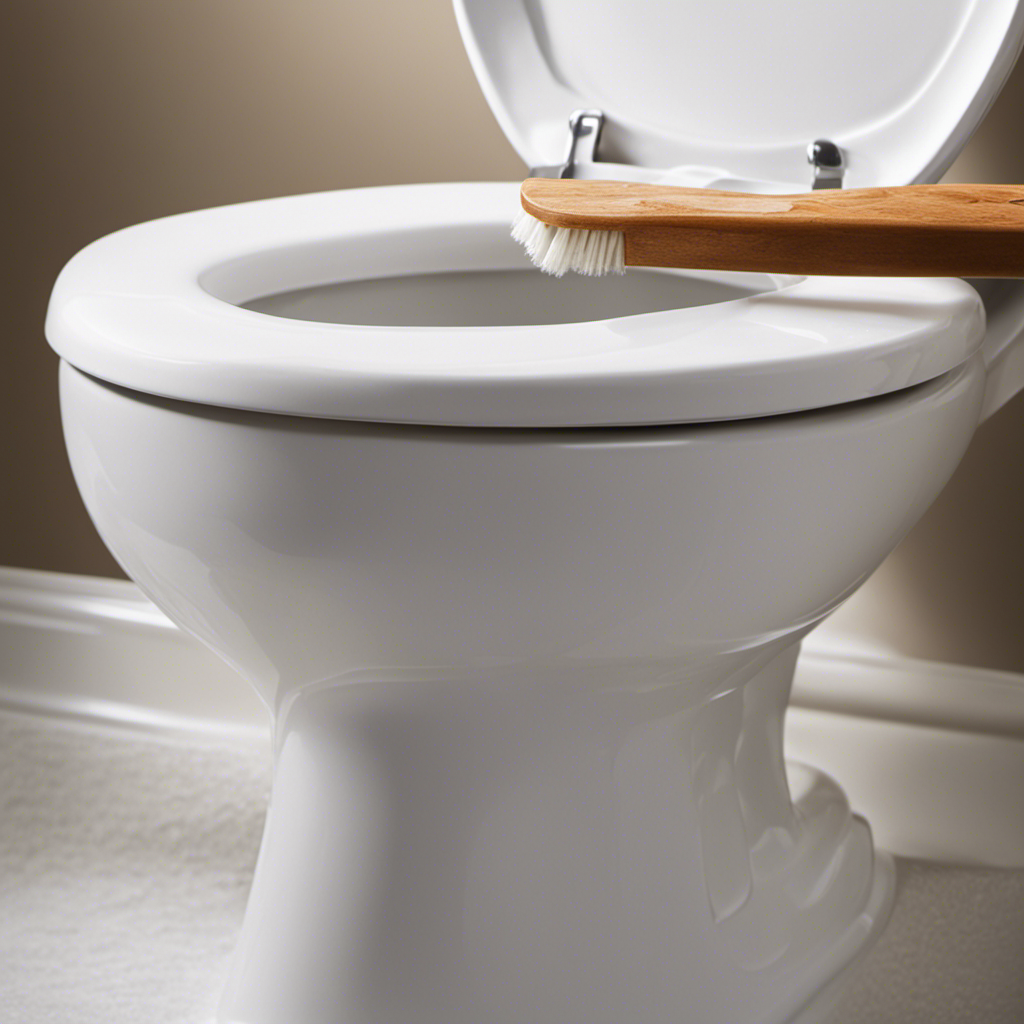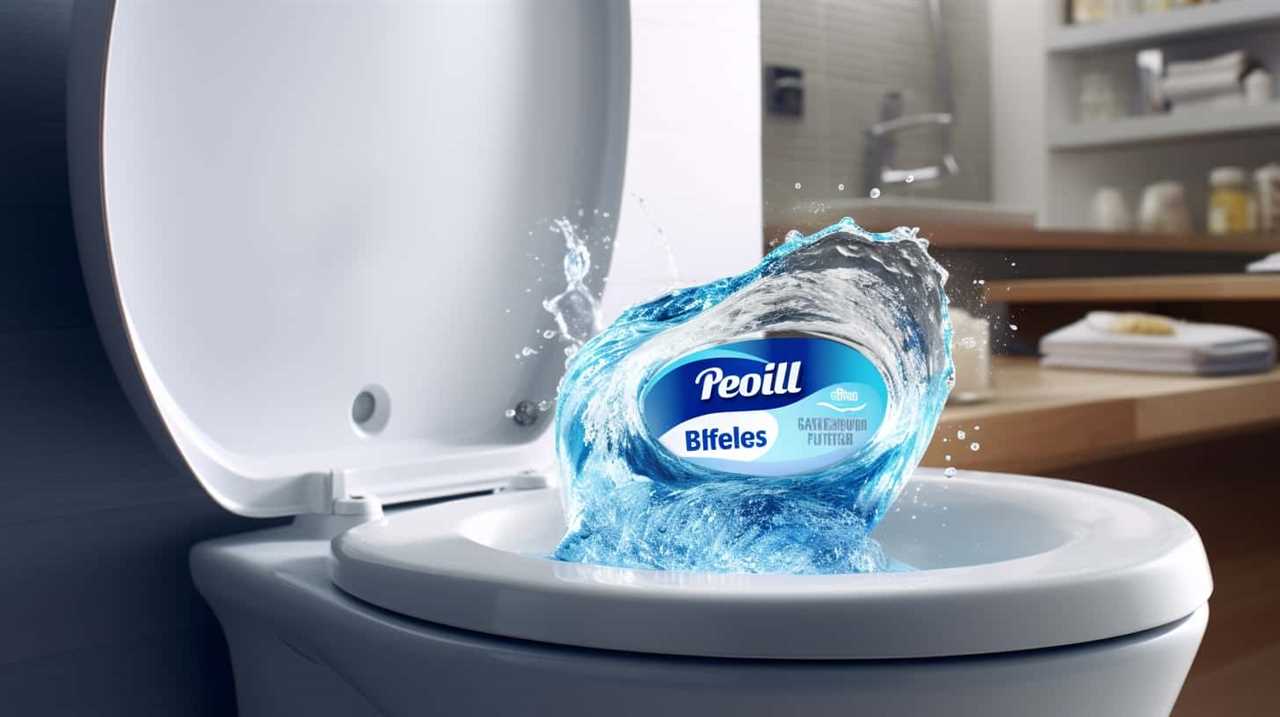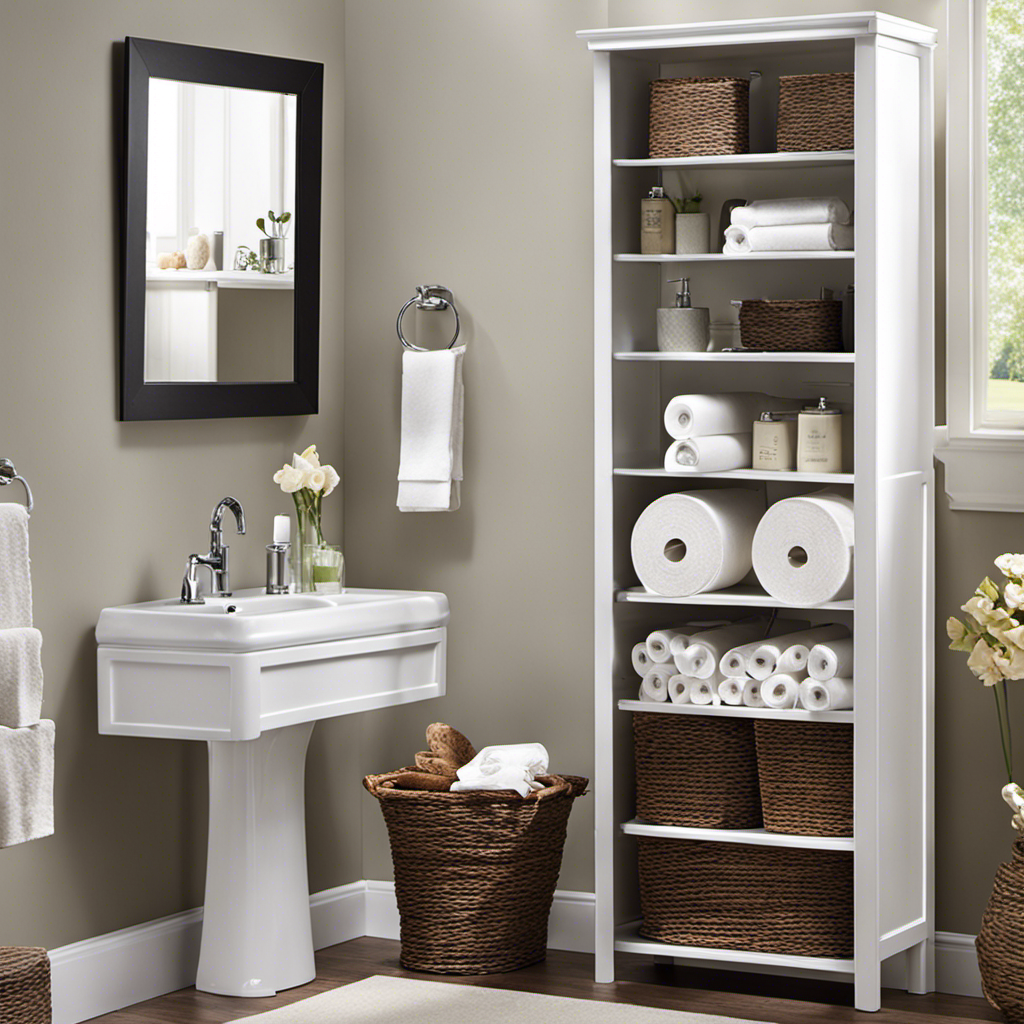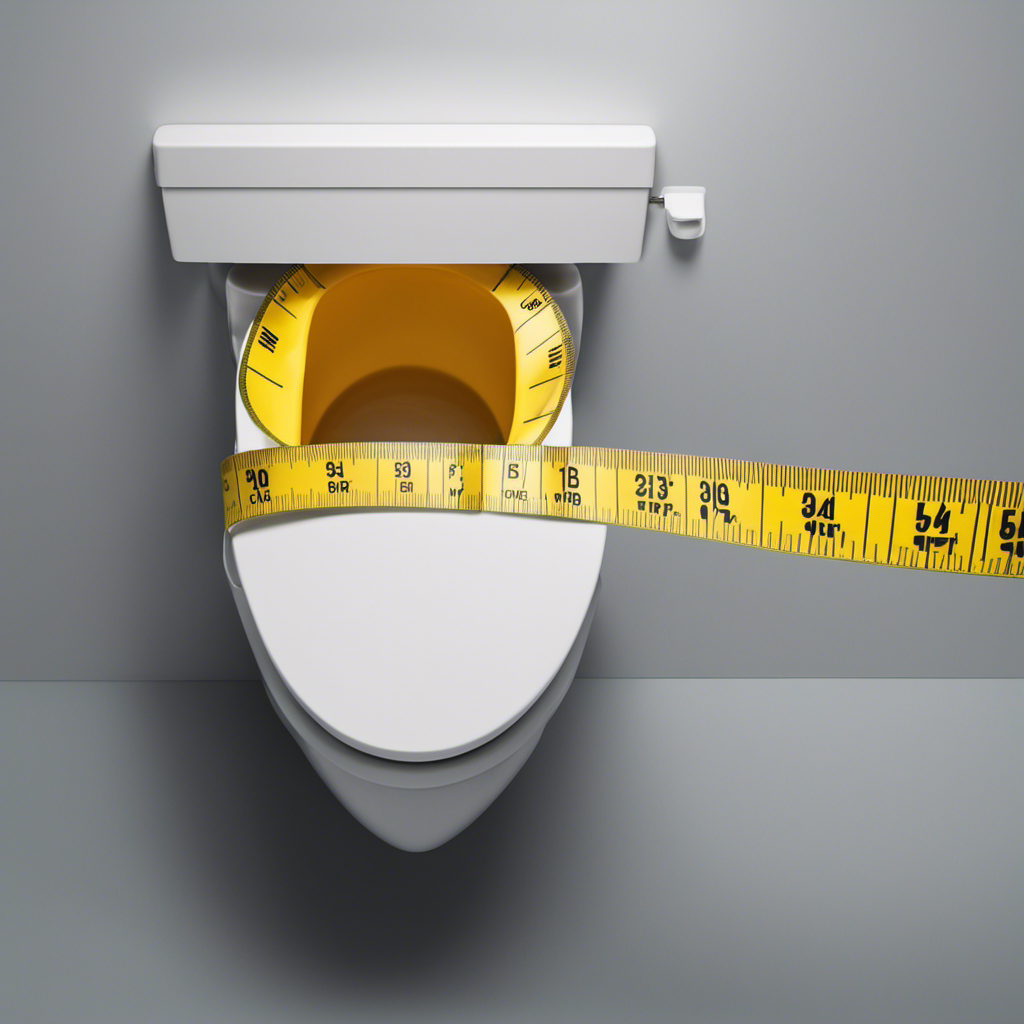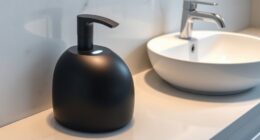I’ve got a simple solution for those pesky urine stains on your toilet seat. In just a few easy steps, you’ll have a sparkling clean bathroom once again.
With the right cleaning supplies and a little elbow grease, you can say goodbye to those unsightly stains.
No need to worry about future stains either – I’ll show you how to prevent them too.
So let’s get started and banish those urine stains for good!
Key Takeaways
- Urine stains are caused by uric acid crystals in the urine.
- Promptly addressing urine stains is important to prevent stubborn stains.
- Using a mild cleaning solution or disinfectant spray designed for toilets is recommended.
- Preventing future urine stains on the toilet seat can be done by using toilet seat covers or wiping the seat before sitting down and practicing good hygiene habits.
Understanding the Cause of Urine Stains
To understand the cause of urine stains, it’s important to know why they occur in the first place.
Common misconceptions suggest that urine stains are solely caused by poor hygiene or lack of cleanliness. However, the truth is that urine stains are mainly caused by the presence of uric acid crystals in the urine. These crystals can adhere to surfaces such as toilet seats and form yellowish stains over time.
It’s essential to address urine stains promptly, as they can pose health risks. Urine contains bacteria that can multiply and lead to unpleasant odors and potential infections. Additionally, if left untreated, urine stains can become stubborn and difficult to remove.
Understanding the cause of urine stains helps us take appropriate measures to prevent and remove them effectively.
Preparing the Necessary Cleaning Supplies
Before you start, make sure you have all the necessary cleaning supplies ready.
Maintaining toilet seat hygiene is important for a clean and healthy bathroom environment.
To effectively remove urine stains from a toilet seat, you will need a few key supplies.
First, grab a pair of gloves to protect your hands from any bacteria or chemicals.
Next, gather a mild cleaning solution or disinfectant spray specifically designed for toilets.
Additionally, you will need a clean cloth or sponge for scrubbing the stained area.
Lastly, have a bucket of warm water nearby for rinsing and a clean towel for drying.
Having these supplies readily available will make the cleaning process efficient and effective.
Now, let’s move on to applying the cleaning solution to the stained area.
Applying the Cleaning Solution to the Stained Area
Now it’s time to apply the cleaning solution to the stained area. To effectively remove stubborn urine stains, follow these steps:
- Pour the cleaning solution directly onto the stained area, ensuring full coverage.
- Allow the solution to sit for a few minutes to penetrate and break down the stain.
- Use a scrub brush or sponge to agitate the area gently, loosening the stain.
Applying the cleaning solution effectively is crucial in removing stubborn urine stains. By allowing the solution to sit and penetrate the stain, it becomes easier to scrub and remove the discoloration.
Once you have applied the solution and let it sit, you can move on to the next step: scrubbing and removing the urine stains.
Scrubbing and Removing the Urine Stains
Once the cleaning solution has penetrated the stain, I gently scrub the area with a sponge or brush to break down and remove the discoloration. It’s important to be thorough in this step to ensure complete stain removal.
I focus on scrubbing the affected area in small circular motions, applying gentle pressure. This helps to break up the stain and lift it from the surface of the toilet seat.
After scrubbing, I rinse the area with clean water to remove any remaining cleaning solution or residue.
To maintain the cleanliness of the toilet seat and prevent future urine stains, regular toilet seat maintenance is crucial. This includes regular cleaning with appropriate cleaning products, as well as implementing urine stain prevention techniques such as using toilet seat covers or reminding users to be mindful of their aim.
Preventing Future Urine Stains on the Toilet Seat
To keep your toilet seat clean and prevent future stains, it’s essential to practice regular maintenance and utilize preventive measures. Here are some tips to help you maintain a clean and stain-free toilet seat:
-
Hygiene practices for using public restrooms:
-
Always use toilet seat covers or wipe the seat before sitting down.
-
Avoid touching surfaces with your bare hands.
-
Wash your hands thoroughly after using the restroom.
-
Tips for teaching young children proper toilet etiquette:
-
Teach them to flush the toilet after use.
-
Encourage them to use toilet paper and dispose of it properly.
-
Show them how to wash their hands with soap and water.
Conclusion
In conclusion, tackling urine stains on a toilet seat requires a simple yet effective cleaning process. By understanding the cause of these stains and using the right cleaning supplies, you can easily remove them.
Scrubbing the stains diligently will ensure a pristine toilet seat. However, it’s important to remember that prevention is key. By maintaining good hygiene practices and regularly cleaning the toilet seat, you can prevent future urine stains from appearing.
So, let’s bid farewell to those unsightly stains and embrace a clean and fresh bathroom experience.
